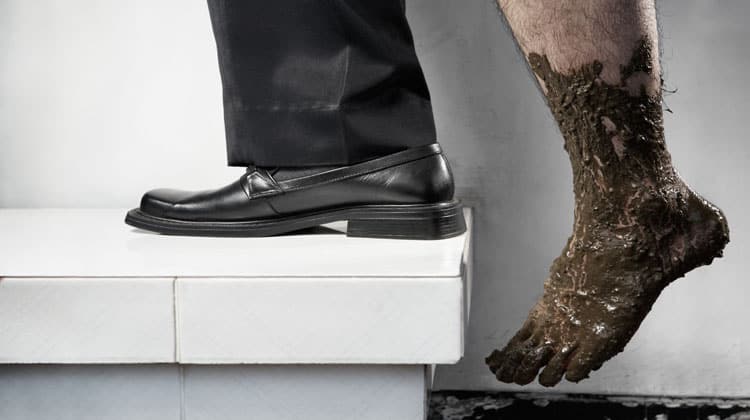As a remote worker, you always have the flexibility to choose where you work—and that can include working from your own home or any other place where you can connect to the internet and get some peace. Being your boss can be incredibly rewarding, but it’s not without its challenges, including the difficulty of managing your finances when there’s no office manager or payroll department to take care of your pay stub, benefits information, and other information that comes along with salaried employment.
Fortunately, there are few simple and effective ways to change your financial life right now with just one or two changes to start saving money every month and building your savings account up from zero.
Step 1 – Get A Budget
You should know where your money is going before you can do anything about it. Create a budget and stick with it, or at least try. If you don’t have one already, then you should track your spending for one month and see how much money you spend each month on things like food, entertainment, travel expenses, and other things.
Step 2 – Save Money on Groceries
Reduce your grocery bill by becoming a coupon clipper. You can also save money on groceries by making a weekly meal plan and sticking to it, buying in bulk, shopping at warehouse stores, and eating off-brand or generic items. Try cutting out soda, fast food, and other unnecessary expenses that can easily run up your monthly bills.
Consider getting a second job or doing freelance work on nights and weekends. This can help you create a flexible schedule, allowing you to work from home or another location of your choosing. For those who live in major cities, consider becoming a remote worker. Remote workers have a degree of freedom that most office workers don’t enjoy. Many companies offer remote jobs to help recruit top talent while saving on office space costs.
Step 3 – Track Your Spending Habits
The first step to changing your financial life is to be brutally honest with yourself and monitor where you are spending your money. While an overwhelming majority of people have a budget, only 1 in 5 have a budget that they stick to. Instead of going into auto-pilot and automatically paying bills without ever taking a second look at them, I recommend checking each one every month for accuracy.
And when it comes to living expenses (rent/mortgage, utilities), make sure that everything is tracked – from credit card purchases to rent checks! Once you start looking at your pay stub and statements more closely, it will become clear what areas need improvement.

Step 4 – Consolidate Debt
Pay off that credit card debt. Just pay it down. How? Pay more than your minimum balance. If you have 3 credit cards with a total balance of $5,000 at 18% interest, pay more than $1,100 monthly to go from owing money on three cards each month to only one—and paying significantly less in interest.
Step 5 – Reduce Fixed Expenses
Review your current spending and identify areas where you could cut back. If you are already spending under 30% of your income on housing, transportation, food, and entertainment, then congratulations – those expenses can’t be reduced much further. This step is for everyone else. People first look at their budget for monthly expenses such as rent or mortgage payments, utility bills, cable and internet access costs, car loan or lease payments, and auto insurance premiums.
Next, check your pay stubs. Wherever possible, avoid setting up fixed expenses that make it difficult to reduce when times get tight—such as subscriptions like Netflix, gym memberships, and regular deliveries from services like Amazon Prime. All those little purchases add up fast!
Step 6 – Create Additional Income
To increase your income quickly, you will have to look at creating additional streams of income. This may be self-employment, freelance work, or starting a small business. Working for yourself takes sacrifice and hard work but can pay off in dividends. The extra time you have when not commuting is time you can use to start your business. Start by planning how much time and energy you’re willing to put into building a successful business before deciding if it’s something worth pursuing.
If freelancing isn’t for you, another way to make money from home is as a remote worker. As an agency or corporate company employee, you could get sent out on remote jobs around the country, paying top dollar to someone who telecommutes from their home office.
Step 7 – Automate Savings
Automate savings by linking your bank account or credit card directly to a savings account. Each time you make a purchase, a percentage of your money is transferred into your savings account. This way, you will never have to think about saving—you’ll never see that money! And because it isn’t in your checking or credit card balance, you won’t miss it either.
Step 8 – Invest in Retirement
Don’t wait to invest in your retirement! You don’t have to be rich or retired—in fact, you can invest in your future and stay on course for financial security. Start today with one of these five retirement accounts:
- Traditional 401(k),
- Roth 401(k),
- Health Savings Account (HSA),
- Roth IRA, and
- traditional IRA.
Also, read about investing strategies and how long it will take you to save for retirement. What is a paystub? A pay stub summarizes your earnings from an employer, showing how much money you earned, how much was withheld for taxes and other deductions, and what was paid out to you. It also includes information on any fringe benefits that your employer-provided. This document proves that you earned income during a specific period; some employers may require pay stubs when applying for a loan or applying for public assistance such as Medicaid or food stamps.






